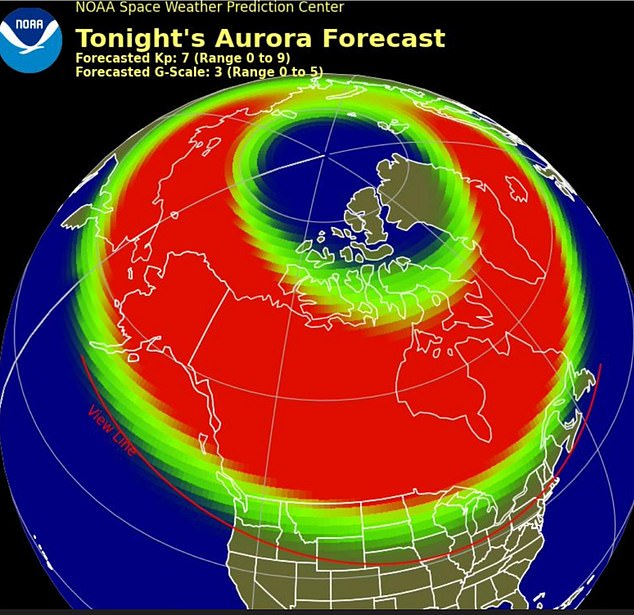World told to prepare for severe geomagnetic storm TODAY which could bring chaos to cellphone networks, GPS and power grids
A massive solar storm is currently sweeping across Earth, which could put even more strain on power grids as the US faces disruptions from Hurricane Milton that hit Florida.
The National Oceanic and Atmospheric Administration (NOAA) has issued an extreme geomagnetic storm warning for the next two days after the sun unleashed a powerful blast of energy on Tuesday.
The Level 4 geomagnetic storm began hitting Earth around 9:30 a.m. ET and is expected to continue through Friday.
This can cause radio interference, satellite interference and GPS problems.
It could also damage or disrupt the power grid, which could cause even more misery as America deals with the devastating aftermath of Hurricane Milton.
G4 storm warnings are rare and this is only the second warning NOAA has issued since 2005.
Officials warn US to prepare for severe solar storm that could put even more demand on power grids strained by Hurricane Milton
New York City officials are among those warning the public about the approaching G4 storm.
Aries Dela Cruz, spokesperson for New York City Emergency Management, said, “We are monitoring the impacts, but there is no need for the public to take any action at this time.
‘We obviously don’t want to worry people. We just want people not to be surprised if their Google Maps stops working or something like that.”
Sunspot AR3848 – a dark, fast-growing region of strong magnetic fields on the sun’s surface – produced a strong solar flare of class X1.8, which could cause power outages and strain the electrical grid.
Solar flares are powerful bursts of radiation that result from the release of magnetic energy associated with sunspots. They are the largest explosive events in the solar system.
After the solar flare erupted, a second explosion of high-energy particles and solar plasma formed a direct line to Earth. This is called a coronal mass ejection or CME.
The CME is the cause of the G4 storm.
It hurtled towards us at a speed of about 1200 to 1300 kilometers per second and reached Earth on Thursday morning, causing a disruption in the magnetosphere – the region of space surrounding our planet that is dominated by its magnetic field.
This disturbance is known as a geomagnetic storm. It reached G4 strength at approximately 1:00 PM ET, according to NOAA.
Geomagnetic storms could also cause blinding aurora images to appear at unusually low latitudes, and they could be visible Thursday over “much of the northern half of the country,” perhaps as far south as Alabama to Northern California ‘, according to NOAA.
But like solar flares, they can also cause radio interference, disrupt satellite communications and damage power grids.
“While the public does not need to take any action at this time, we always encourage everyone to stay informed through Notify NYC and have an emergency plan ready with a Go Bag with AM radio,” NYC Emergency Management wrote on X, formerly Twitter.

Geomagnetic storms could also cause blinding aurora images to appear at unusually low latitudes, and they could be visible Thursday over “much of the northern half of the country,” perhaps as far south as Alabama to Northern California ‘, according to NOAA.
While these events are rare, this is not the first high-intensity geomagnetic storm this year.
On May 10, Earth experienced its strongest solar storm in two decades when a G5, or “extreme” storm, struck. This produced one of the strongest auroral phenomena observed in the past 500 years.
This week’s solar activity adds to mounting evidence that the sun has reached solar maximum, the period during its eleven-year cycle when solar activity is at its peak.
In 2019, scientists predicted that solar maximum would begin around July 2025. But as the sun’s activity increased over the course of 2024, it became clear that this peak would come much sooner than expected, prompting experts to revise their prediction.
The sun has already shot 41 X-class solar flares this year. According to spaceweather.com, that’s more than in the past nine years combined.
In an average year, class X solar flares occur only about 10 times.
Solar maximum could last at least another year, so we can expect many more intense solar flares, CMEs, and geomagnetic storms to hit our planet in 2025.
